Chromebook Charger is the topic of this article today. Chromebooks have become indispensable tools for students, professionals, and casual users alike due to their affordability, portability, and simplicity. However, like any electronic device, Chromebooks require power to function, and that’s where the Chromebook charger comes into play. In this comprehensive guide, we’ll delve into all aspects of Chromebook chargers, including types, specifications, tips for usage, and troubleshooting common issues.
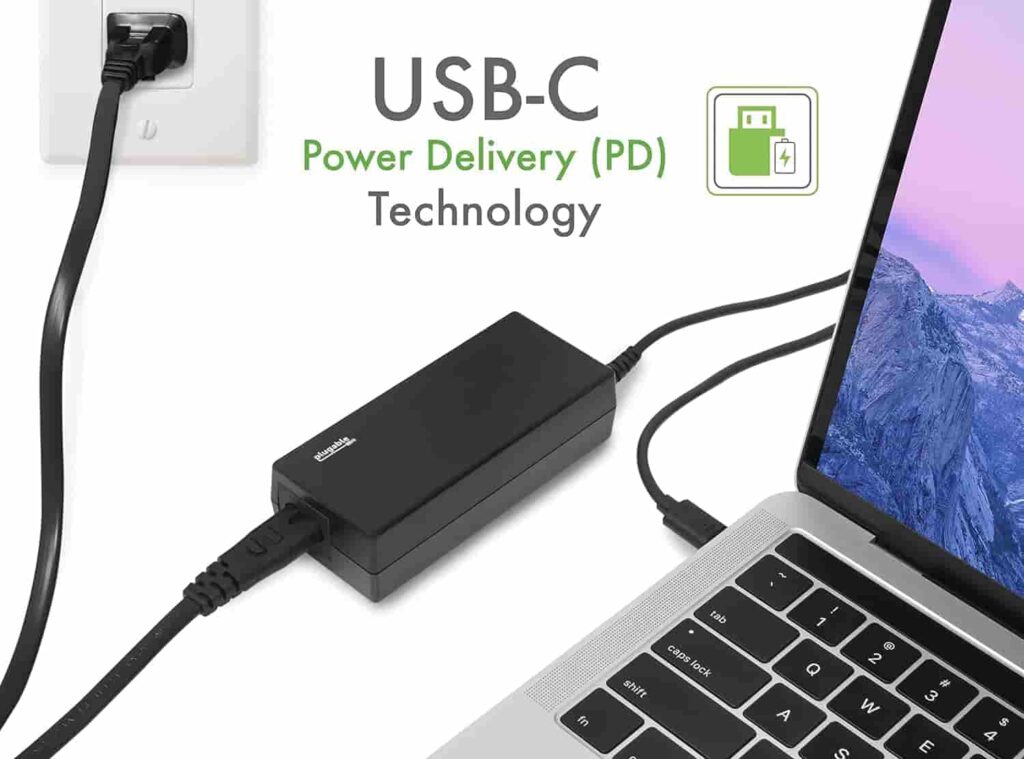
Types of Chromebook Chargers
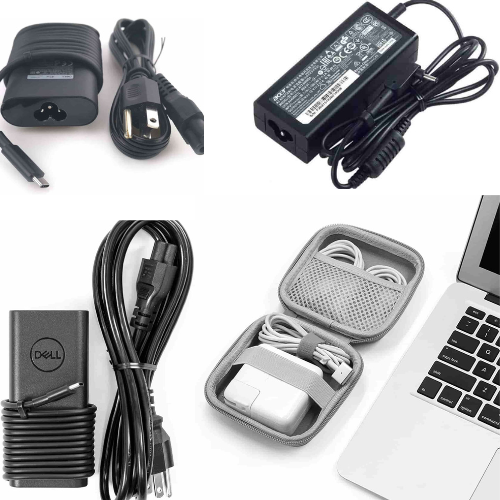
Standard AC Adapter:
Most Chromebooks come with a standard AC adapter that plugs into a power outlet. These chargers typically consist of a power brick with a detachable cable that connects to the Chromebook’s charging port.
USB-C Charger:
Many newer Chromebooks utilize USB-C charging technology, allowing for more versatility and compatibility with a range of devices. USB-C chargers can also power other devices such as smartphones and tablets, making them convenient for users with multiple gadgets.
Portable Chargers:
For users on the go or in need of additional power, portable chargers, also known as power banks, provide a handy solution. These chargers come in various capacities and can recharge a Chromebook when access to a power outlet is limited.
Specifications
Understanding the specifications of a Chromebook charger is crucial for ensuring compatibility and optimal performance. Here are key specifications to consider:
Voltage (V): The voltage rating of the charger must match or be compatible with the Chromebook’s voltage requirement to avoid damaging the device.
Amperage (A): The amperage, or current rating, determines how quickly the charger can replenish the Chromebook’s battery. Using a charger with a higher amperage rating can expedite charging, provided the Chromebook supports it.
Connector Type: Different Chromebook models may feature varying connector types, such as proprietary connectors or USB-C. It’s essential to use a charger with the correct connector to ensure a secure fit and proper charging.

Tips for Chromebook Charger Usage:
Charging Failure:
If your Chromebook fails to charge when connected to the charger, ensure that the power outlet is functional and that the charger is securely plugged in. If the issue persists, try using a different charger or outlet to isolate the problem.
Slow Charging:
If your Chromebook charges slowly, check for any obstructions in the charging port or cable damage. Using a charger with a higher amperage rating may also help speed up the charging process.
Overheating:
Excessive heat during charging can indicate a faulty charger or battery issue. Discontinue use immediately and consult a professional for diagnosis and repair.
The Chromebook charger is an essential accessory that ensures uninterrupted productivity and enjoyment of your Chromebook. By understanding the different types, specifications, and best practices for usage, you can maximize the lifespan of your device’s battery and avoid common charging-related issues. Whether you’re a student, professional, or casual user, a reliable charger is indispensable for keeping your Chromebook powered up and ready to go whenever you need it.
Samsung Chromebook Charger
Samsung Chromebooks have gained popularity for their sleek design, efficient performance, and seamless integration with Google’s Chrome OS. Essential to the functionality of any Chromebook is its charger, and Samsung offers a range of chargers tailored to their Chromebook lineup. In this detailed guide, we’ll explore everything you need to know about the Samsung Chromebook charger, including types, specifications, usage tips, and troubleshooting methods.
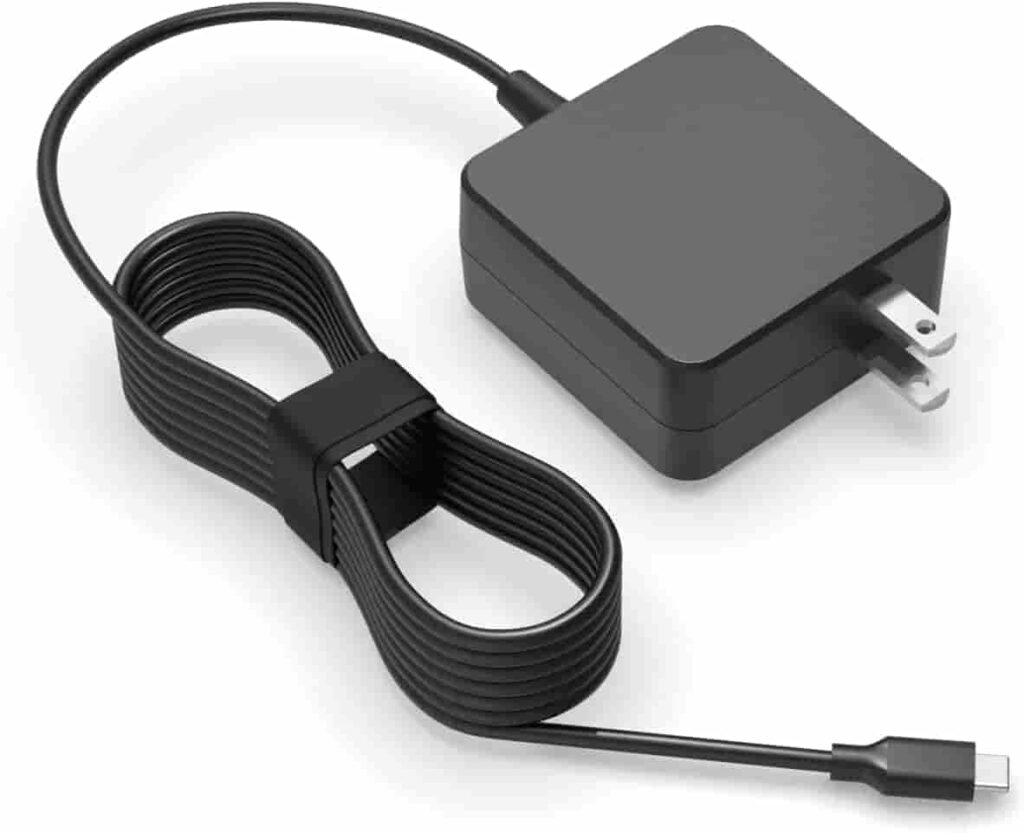
Types of Samsung Chromebook Chargers
Standard AC Adapter:
Samsung Chromebooks typically come with a standard AC adapter for charging. These chargers consist of a power brick and a detachable cable that connects to the Chromebook’s charging port. The design may vary depending on the specific Chromebook model.
USB-C Charger:
With the evolution of technology, many newer Samsung Chromebooks utilize USB-C charging ports. USB-C chargers offer versatility, faster charging speeds, and compatibility with a wide range of devices beyond Chromebooks, including smartphones and tablets.
Portable Chargers: Samsung also offers portable chargers or power banks for users who need charging solutions on the go. These portable chargers come in various capacities and provide a convenient way to charge your Chromebook when access to a power outlet is limited.

Specifications of Samsung Chromebook Chargers:
Understanding the specifications of Samsung Chromebook chargers is essential for optimal performance and compatibility. Here are key specifications to consider:
Voltage (V): The voltage rating of the charger must match or be compatible with the Chromebook’s voltage requirement to avoid damaging the device.
Amperage (A): The amperage rating determines how quickly the charger can replenish the Chromebook’s battery. Using a charger with a higher amperage rating can result in faster charging, provided the Chromebook supports it.
Connector Type: Samsung Chromebooks may feature different connector types, such as proprietary connectors or USB-C. It’s crucial to use a charger with the correct connector to ensure a secure fit and proper charging.
Tips for Samsung Chromebook Charger Usage:
Use Genuine Chargers:
To ensure compatibility and safety, always use genuine Samsung chargers provided by the manufacturer.
Proper Storage:
When not in use, store the charger in a cool, dry place away from direct sunlight to prevent cable damage and prolong its lifespan.
Avoid Overcharging:
Overcharging can degrade the battery life of your Samsung Chromebook. Once the battery is fully charged, unplug the charger to prevent unnecessary strain on the battery.
Regular Maintenance: Inspect the charger’s connectors and cable for any signs of damage, such as fraying or corrosion. Clean the connectors gently with a dry cloth if necessary to maintain a reliable connection.
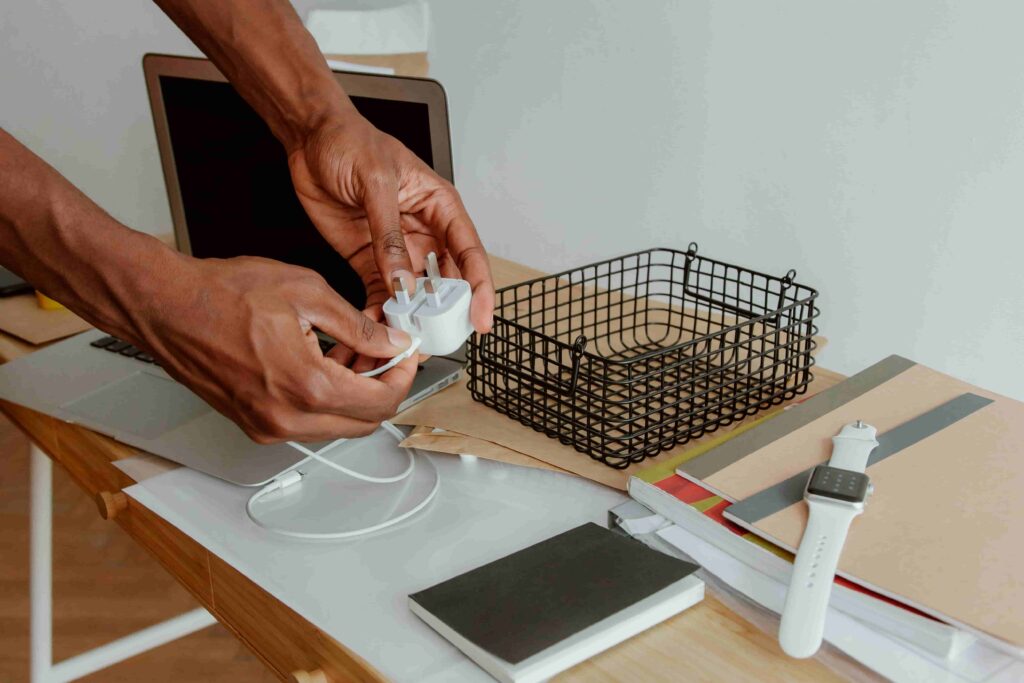
Troubleshooting Samsung Chromebook Charger Issues.
Charging Failure:
If your Samsung Chromebook fails to charge when connected to the charger, ensure that the power outlet is functional and that the charger is securely plugged in. Try using a different outlet or charger to rule out potential issues.
Slow Charging:
Slow charging could be due to a faulty charger, cable, or charging port. Check for any obstructions or damage and try using a different charger or cable to see if the issue persists.
Overheating:
If the charger or Chromebook becomes excessively hot during charging, discontinue use immediately and allow them to cool down. Overheating may indicate a problem with the charger, battery, or Chromebook itself, and professional assistance may be required.
The Samsung Chromebook charger is an indispensable accessory that ensures the smooth operation and longevity of your device. By understanding the different types, specifications, usage tips, and troubleshooting methods, you can maximize the performance and lifespan of your Samsung Chromebook charger, ensuring reliable power whenever you need it. Whether you’re at home, in the office, or on the go, a reliable charger is essential for keeping your Samsung Chromebook powered up and ready for action.
Acer Chromebook Charger
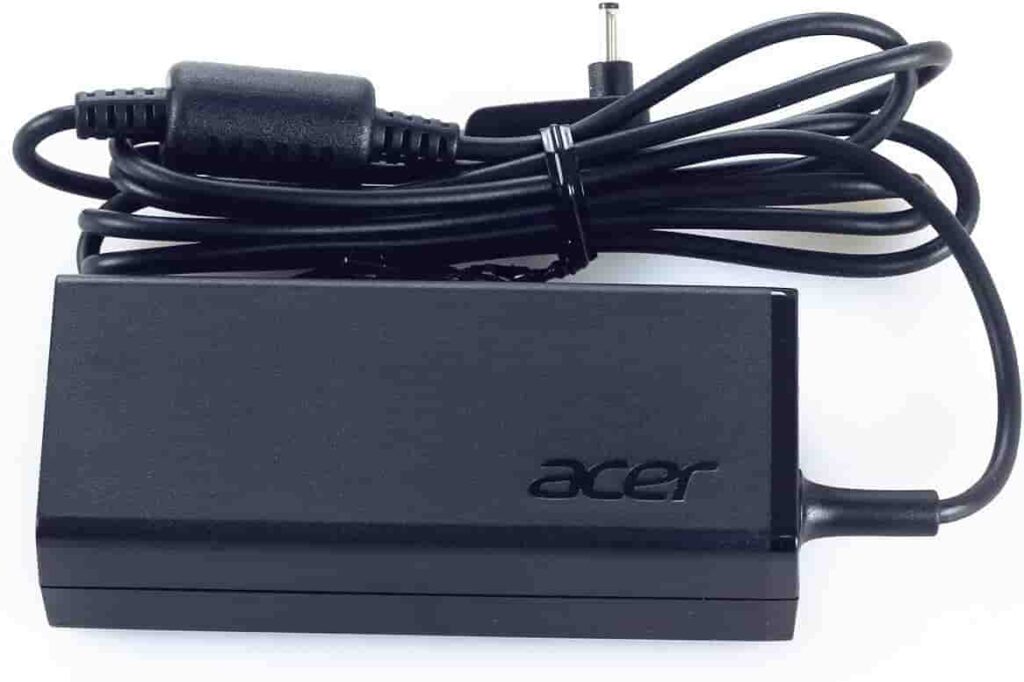
Acer Chromebooks are renowned for their affordability, reliability, and versatility, making them popular choices for students, professionals, and casual users alike. Central to the functionality of any Chromebook is its charger, and Acer offers a range of chargers tailored to their Chromebook lineup. In this detailed guide, we’ll delve into everything you need to know about the Acer Chromebook charger, including types, specifications, usage tips, and troubleshooting methods.
Types of Acer Chromebook Chargers
Standard AC Adapter:
Acer Chromebooks typically come with a standard AC adapter for charging. These chargers consist of a power brick and a detachable cable that plugs into the Chromebook’s charging port. The design may vary depending on the specific Chromebook model.
USB-C Charger:
With the advancement of technology, many newer Acer Chromebooks feature USB-C charging ports. USB-C chargers offer versatility, faster charging speeds, and compatibility with a wide range of devices, including smartphones and tablets.
Portable Chargers:
Acer also offers portable chargers or power banks for users who require charging solutions on the go. These portable chargers come in various capacities and provide a convenient way to charge your Chromebook when access to a power outlet is limited.
Specifications of Acer Chromebook Chargers.
Understanding the specifications of Acer Chromebook chargers is essential for optimal performance and compatibility. Here are key specifications to consider:
Voltage (V): The voltage rating of the charger must match or be compatible with the Chromebook’s voltage requirement to avoid damaging the device.
Amperage (A): The amperage rating determines how quickly the charger can replenish the Chromebook’s battery. Using a charger with a higher amperage rating can result in faster charging, provided the Chromebook supports it.
Connector Type: Acer Chromebooks may feature different connector types, such as proprietary connectors or USB-C. It’s crucial to use a charger with the correct connector to ensure a secure fit and proper charging.
Tips for Acer Chromebook Charger Usage.
Use Genuine Chargers:
To ensure compatibility and safety, always use genuine Acer chargers provided by the manufacturer.
Proper Storage:
When not in use, store the charger in a cool, dry place away from direct sunlight to prevent cable damage and prolong its lifespan.
Avoid Overcharging:
Overcharging can degrade the battery life of your Acer Chromebook. Once the battery is fully charged, unplug the charger to prevent unnecessary strain on the battery.
Regular Maintenance:
Inspect the charger’s connectors and cable for any signs of damage, such as fraying or corrosion. Clean the connectors gently with a dry cloth if necessary to maintain a reliable connection.
Troubleshooting Acer Chromebook Charger Issues.
Charging Failure:
If your Acer Chromebook fails to charge when connected to the charger, ensure that the power outlet is functional and that the charger is securely plugged in. Try using a different outlet or charger to rule out potential issues.
Slow Charging:
Slow charging could be due to a faulty charger, cable, or charging port. Check for any obstructions or damage and try using a different charger or cable to see if the issue persists.
Overheating:
If the charger or Chromebook becomes excessively hot during charging, discontinue use immediately and allow them to cool down. Overheating may indicate a problem with the charger, battery, or Chromebook itself, and professional assistance may be required.
The Acer Chromebook charger is an essential component that ensures the seamless operation and longevity of your device. By understanding the different types, specifications, usage tips, and troubleshooting methods, you can maximize the performance and lifespan of your Acer Chromebook charger, ensuring reliable power whenever you need it. Whether you’re at home, in the classroom, or on the move, a dependable charger is indispensable for keeping your Acer Chromebook charged and ready for any task.
HP Chromebook Charger
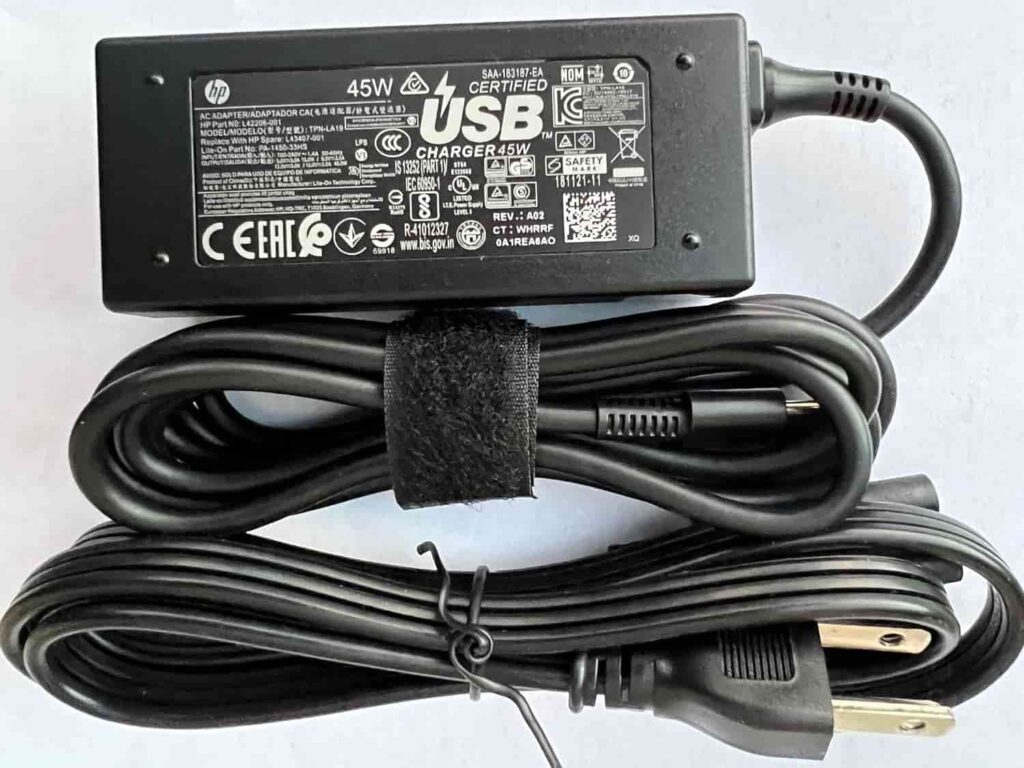
HP Chromebooks are renowned for their reliability, performance, and affordability, catering to the needs of students, professionals, and casual users alike. At the heart of every Chromebook’s functionality lies its charger, and HP provides a variety of chargers tailored to their Chromebook lineup. In this detailed guide, we’ll explore everything you need to know about the HP Chromebook charger, including types, specifications, usage tips, and troubleshooting methods.
Types of HP Chromebook Chargers:
Standard AC Adapter:
HP Chromebooks typically come with a standard AC adapter for charging. These chargers consist of a power brick and a detachable cable that plugs into the Chromebook’s charging port. The design may vary based on the specific Chromebook model.
USB-C Charger:
With advancements in technology, many newer HP Chromebooks feature USB-C charging ports. USB-C chargers offer versatility, faster charging speeds, and compatibility with a wide range of devices, including smartphones and tablets.
Portable Chargers:
HP also offers portable chargers or power banks for users who require charging solutions on the go. These portable chargers come in various capacities and provide a convenient way to charge your Chromebook when access to a power outlet is limited.
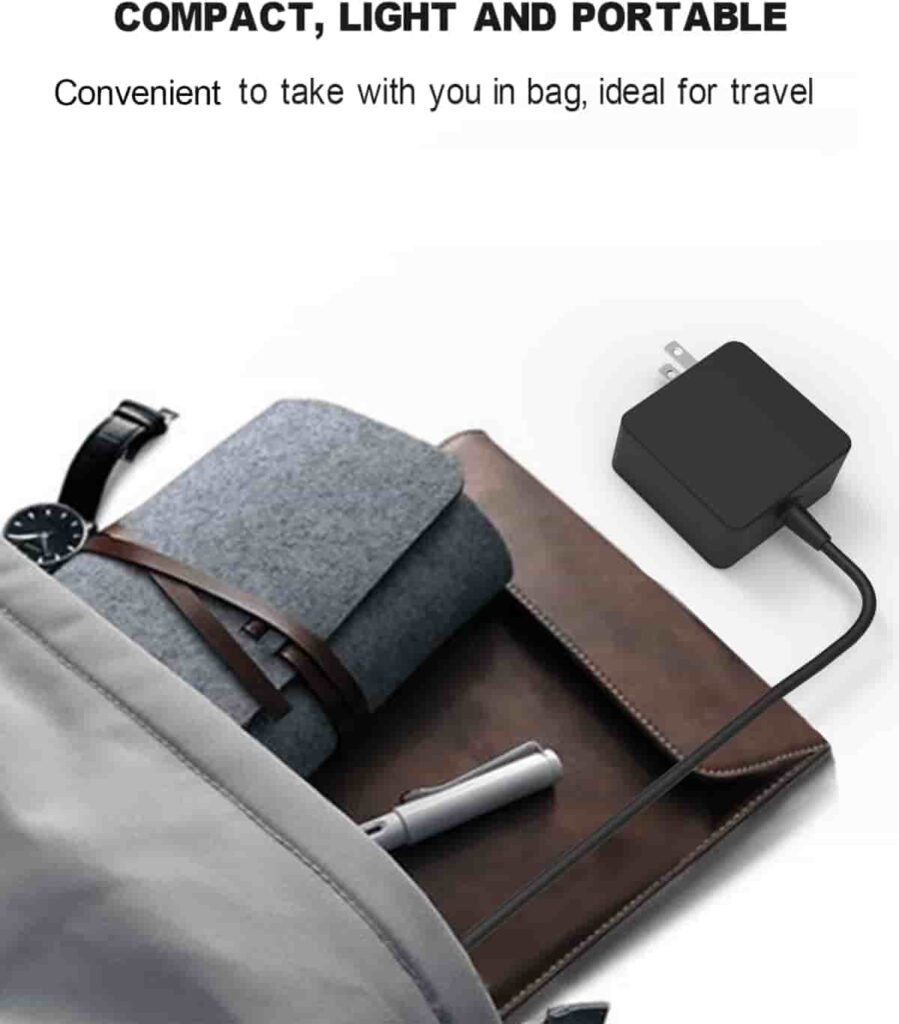
Specifications of HP Chromebook Chargers:
Understanding the specifications of HP Chromebook chargers is essential for optimal performance and compatibility. Here are key specifications to consider:
Voltage (V): The voltage rating of the charger must match or be compatible with the Chromebook’s voltage requirement to avoid damaging the device.
Amperage (A): The amperage rating determines how quickly the charger can replenish the Chromebook’s battery. Using a charger with a higher amperage rating can result in faster charging, provided the Chromebook supports it.
Connector Type: HP Chromebooks may feature different connector types, such as proprietary connectors or USB-C. It’s crucial to use a charger with the correct connector to ensure a secure fit and proper charging.
Tips for HP Chromebook Charger Usage:
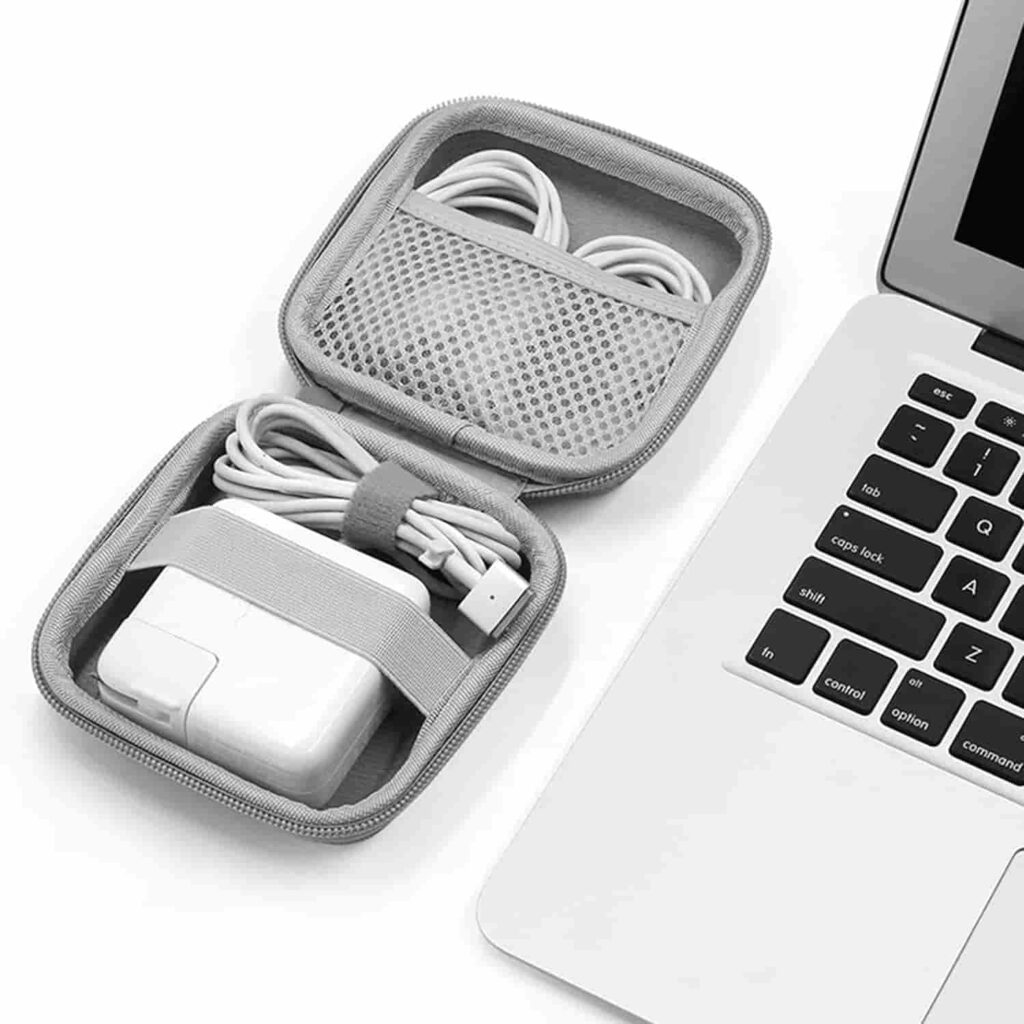
Use Genuine Chargers:
To ensure compatibility and safety, always use genuine HP chargers provided by the manufacturer.
Proper Storage:
When not in use, store the charger in a cool, dry place away from direct sunlight to prevent cable damage and prolong its lifespan.
Avoid Overcharging:
Overcharging can degrade the battery life of your HP Chromebook. Once the battery is fully charged, unplug the charger to prevent unnecessary strain on the battery.
Regular Maintenance:
Inspect the charger’s connectors and cable for any signs of damage, such as fraying or corrosion. Clean the connectors gently with a dry cloth if necessary to maintain a reliable connection.
Troubleshooting HP Chromebook Charger Issues:
Charging Failure:
If your HP Chromebook fails to charge when connected to the charger, ensure that the power outlet is functional and that the charger is securely plugged in. Try using a different outlet or charger to rule out potential issues.
Slow Charging:
Slow charging could be due to a faulty charger, cable, or charging port. Check for any obstructions or damage and try using a different charger or cable to see if the issue persists.
Overheating:
If the charger or Chromebook becomes excessively hot during charging, discontinue use immediately and allow them to cool down. Overheating may indicate a problem with the charger, battery, or Chromebook itself, and professional assistance may be required.
The HP Chromebook charger plays a pivotal role in ensuring the seamless operation and longevity of your device. By understanding the different types, specifications, usage tips, and troubleshooting methods, you can maximize the performance and lifespan of your HP Chromebook charger, ensuring reliable power whenever you need it.
Whether you’re at home, in the office, or on the move, a dependable charger is indispensable for keeping your HP Chromebook charged and ready for any task.
Dell Chromebook Charger

Dell Chromebooks are esteemed for their performance, durability, and versatility, serving as valuable tools for students, professionals, and everyday users. At the core of every Chromebook’s functionality lies its charger, and Dell offers a range of chargers tailored to their Chromebook lineup. In this comprehensive guide, we’ll delve into everything you need to know about the Dell Chromebook charger, including types, specifications, usage tips, and troubleshooting methods.
Types of Dell Chromebook Chargers:
Standard AC Adapter:
Dell Chromebooks typically come with a standard AC adapter for charging. These chargers consist of a power brick and a detachable cable that plugs into the Chromebook’s charging port. The design may vary based on the specific Chromebook model.
USB-C Charger:
With technological advancements, many newer Dell Chromebooks feature USB-C charging ports. USB-C chargers offer versatility, faster charging speeds, and compatibility with a wide range of devices, including smartphones and tablets.
Portable Chargers:
Dell also offers portable chargers or power banks for users who require charging solutions on the go. These portable chargers come in various capacities and provide a convenient way to charge your Chromebook when access to a power outlet is limited.

Specifications of Dell Chromebook Chargers:
Understanding the specifications of Dell Chromebook chargers is crucial for optimal performance and compatibility. Here are key specifications to consider:
Voltage (V): The voltage rating of the charger must match or be compatible with the Chromebook’s voltage requirement to avoid damaging the device.
Amperage (A): The amperage rating determines how quickly the charger can replenish the Chromebook’s battery. Using a charger with a higher amperage rating can result in faster charging, provided the Chromebook supports it.
Connector Type: Dell Chromebooks may feature different connector types, such as proprietary connectors or USB-C. It’s essential to use a charger with the correct connector to ensure a secure fit and proper charging.
Tips for Dell Chromebook Charger Usage:
Use Genuine Chargers:
To ensure compatibility and safety, always use genuine Dell chargers provided by the manufacturer.
Proper Storage:
When not in use, store the charger in a cool, dry place away from direct sunlight to prevent cable damage and prolong its lifespan.
Avoid Overcharging:
Overcharging can degrade the battery life of your Dell Chromebook. Once the battery is fully charged, unplug the charger to prevent unnecessary strain on the battery.
Regular Maintenance:
Inspect the charger’s connectors and cable for any signs of damage, such as fraying or corrosion. Clean the connectors gently with a dry cloth if necessary to maintain a reliable connection.
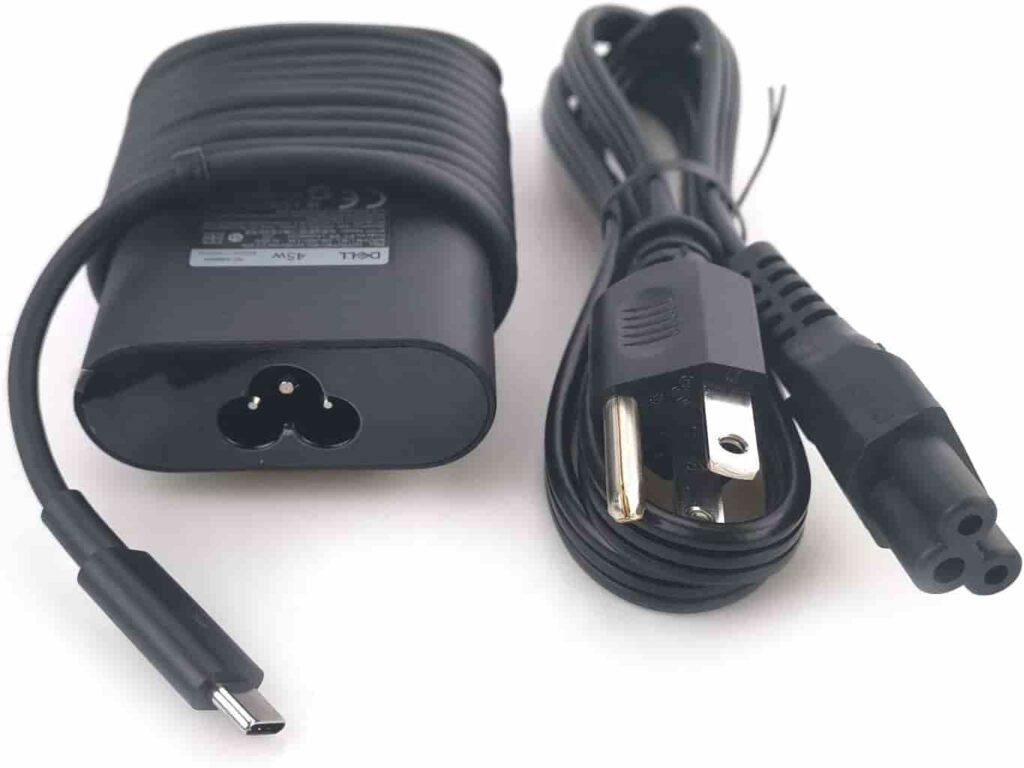
Troubleshooting Dell Chromebook Charger Issues:
Charging Failure:
If your Dell Chromebook fails to charge when connected to the charger, ensure that the power outlet is functional and that the charger is securely plugged in. Try using a different outlet or charger to rule out potential issues.
Slow Charging:
Slow charging could be due to a faulty charger, cable, or charging port. Check for any obstructions or damage and try using a different charger or cable to see if the issue persists.
Overheating:
If the charger or Chromebook becomes excessively hot during charging, discontinue use immediately and allow them to cool down. Overheating may indicate a problem with the charger, battery, or Chromebook itself, and professional assistance may be required.
The Dell Chromebook charger serves as a vital component in ensuring the seamless operation and longevity of your device.
By understanding the different types, specifications, usage tips, and troubleshooting methods, you can maximize the performance and lifespan of your Dell Chromebook charger, ensuring reliable power whenever you need it. Whether you’re at home, in the classroom, or on the move, a dependable charger is indispensable for keeping your Dell Chromebook charged and ready for any task.
Lenovo Chromebook Charger
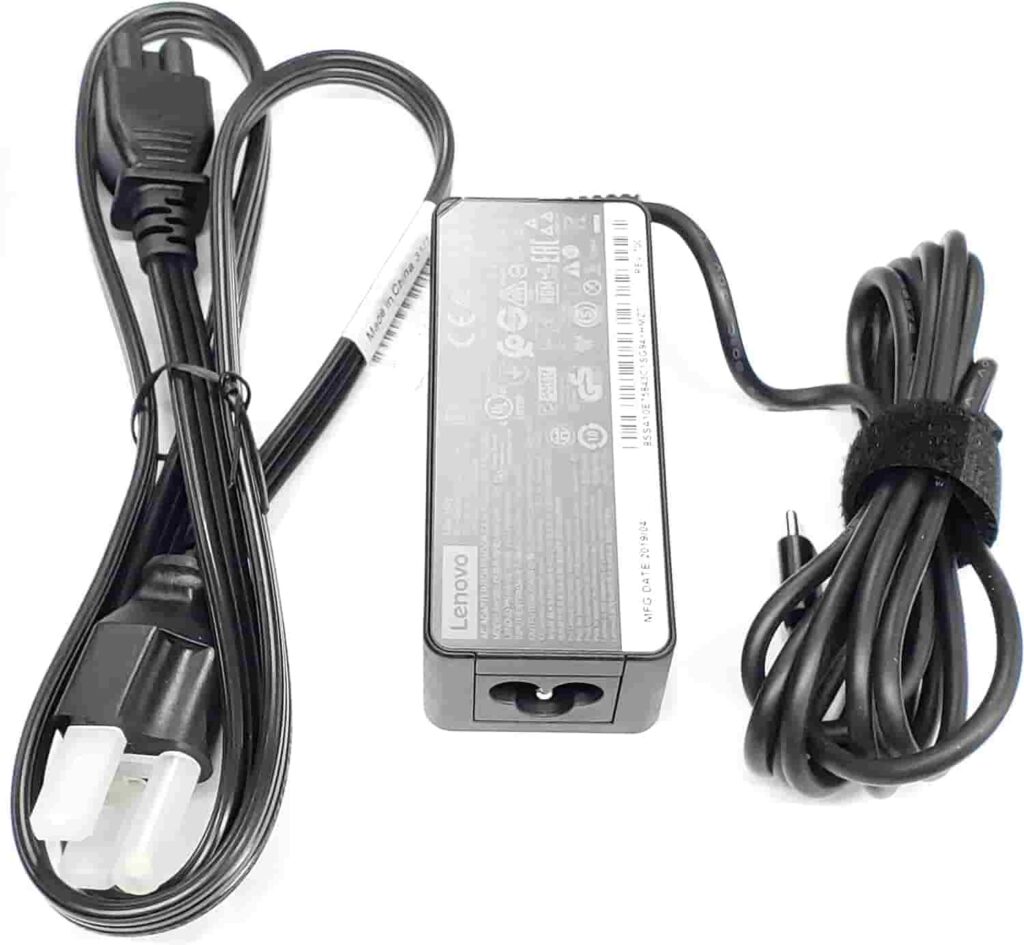
Lenovo Chromebooks have gained popularity for their sleek design, robust performance, and affordability, catering to the needs of students, professionals, and casual users alike. Essential to the functionality of any Chromebook is its charger, and Lenovo offers a variety of chargers tailored to their Chromebook lineup. In this detailed guide, we’ll explore everything you need to know about the Lenovo Chromebook charger, including types, specifications, usage tips, and troubleshooting methods.
Types of Lenovo Chromebook Chargers:
Standard AC Adapter:
Lenovo Chromebooks typically come with a standard AC adapter for charging. These chargers consist of a power brick and a detachable cable that plugs into the Chromebook’s charging port. The design may vary depending on the specific Chromebook model.
USB-C Charger:
With technological advancements, many newer Lenovo Chromebooks feature USB-C charging ports. USB-C chargers offer versatility, faster charging speeds, and compatibility with a wide range of devices, including smartphones and tablets.
Portable Chargers:
Lenovo also offers portable chargers or power banks for users who require charging solutions on the go. These portable chargers come in various capacities and provide a convenient way to charge your Chromebook when access to a power outlet is limited.

Specifications of Lenovo Chromebook Chargers:
Understanding the specifications of Lenovo Chromebook chargers is essential for optimal performance and compatibility. Here are key specifications to consider:
Voltage (V): The voltage rating of the charger must match or be compatible with the Chromebook’s voltage requirement to avoid damaging the device.
Amperage (A): The amperage rating determines how quickly the charger can replenish the Chromebook’s battery. Using a charger with a higher amperage rating can result in faster charging, provided the Chromebook supports it.
Connector Type: Lenovo Chromebooks may feature different connector types, such as proprietary connectors or USB-C. It’s crucial to use a charger with the correct connector to ensure a secure fit and proper charging.
Tips for Lenovo Chromebook Charger Usage:
Use Genuine Chargers:
To ensure compatibility and safety, always use genuine Lenovo chargers provided by the manufacturer.
Proper Storage:
When not in use, store the charger in a cool, dry place away from direct sunlight to prevent cable damage and prolong its lifespan.
Avoid Overcharging:
Overcharging can degrade the battery life of your Lenovo Chromebook. Once the battery is fully charged, unplug the charger to prevent unnecessary strain on the battery.
Regular Maintenance:
Inspect the charger’s connectors and cable for any signs of damage, such as fraying or corrosion. Clean the connectors gently with a dry cloth if necessary to maintain a reliable connection.
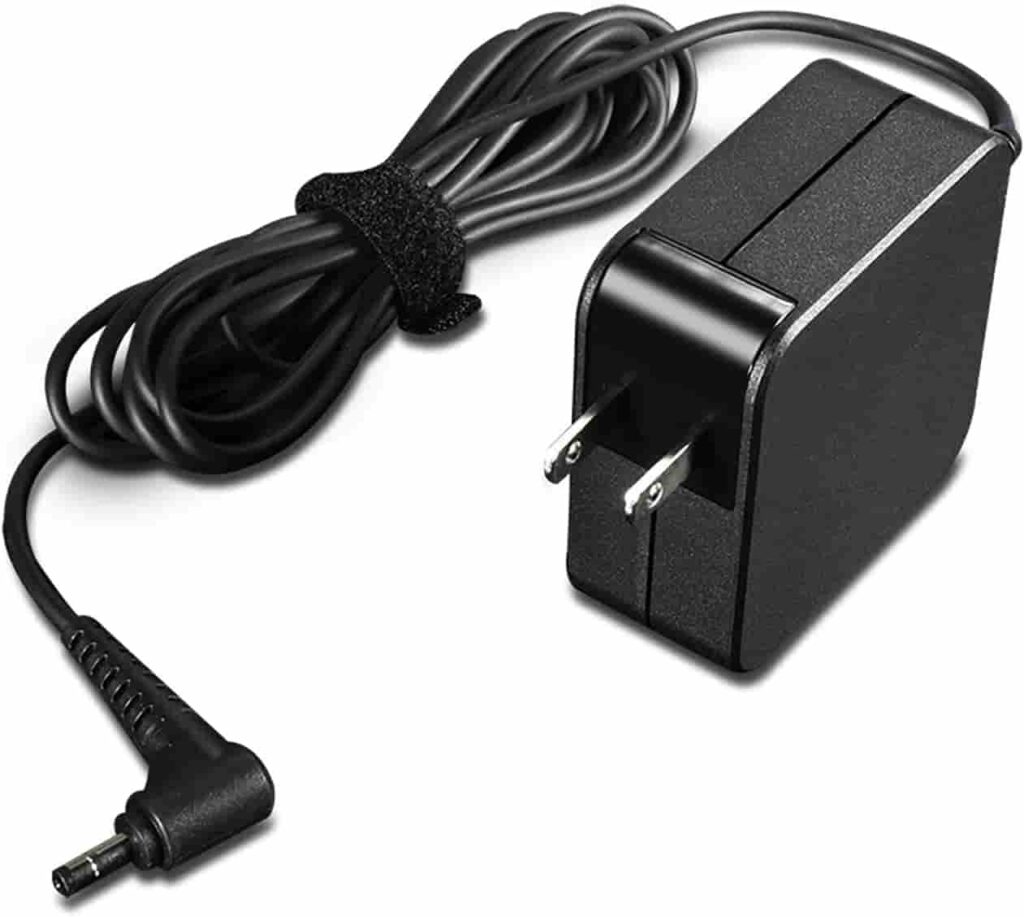
Troubleshooting Lenovo Chromebook Charger Issues:
Charging Failure:
If your Lenovo Chromebook fails to charge when connected to the charger, ensure that the power outlet is functional and that the charger is securely plugged in. Try using a different outlet or charger to rule out potential issues.
Slow Charging:
Slow charging could be due to a faulty charger, cable, or charging port. Check for any obstructions or damage and try using a different charger or cable to see if the issue persists.
Overheating:
If the charger or Chromebook becomes excessively hot during charging, discontinue use immediately and allow them to cool down. Overheating may indicate a problem with the charger, battery, or Chromebook itself, and professional assistance may be required.
The Lenovo Chromebook charger is a crucial component that ensures the seamless operation and longevity of your device. By understanding the different types, specifications, usage tips, and troubleshooting methods, you can maximize the performance and lifespan of your Lenovo Chromebook charger, ensuring reliable power whenever you need it. Whether you’re at home, in the classroom, or on the move, a dependable charger is indispensable for keeping your Lenovo Chromebook charged and ready for any task.
What is Chromebook Charger Type-C

The advent of USB Type-C technology has revolutionized the way we charge electronic devices, including Chromebooks. Chromebooks equipped with Type-C charging ports offer users greater convenience, versatility, and faster charging capabilities.
In this detailed guide, we’ll explore the features and benefits of the Chromebook charger Type-C, highlighting its advantages and providing tips for optimal usage.
Features of Chromebook Charger Type-C:
Reversible Connector:
One of the key features of the Type-C charger is its reversible connector, which allows users to plug in the charger without worrying about its orientation. This eliminates the frustration of trying to insert the charger the right way up, making charging more convenient and hassle-free.
Faster Charging:
Type-C chargers support higher power delivery, allowing for faster charging speeds compared to traditional chargers. This means you can replenish your Chromebook’s battery in less time, enabling you to get back to work or play without delay.
Power Delivery (PD) Support:
Many Type-C chargers for Chromebooks feature Power Delivery (PD) technology, which enables intelligent charging management. PD chargers can dynamically adjust the charging voltage and current based on the device’s requirements, ensuring efficient and safe charging.
Versatility:
Type-C chargers are not only compatible with Chromebooks but also with a wide range of other devices, including smartphones, tablets, laptops, and even some accessories. This versatility means you can use the same charger to power multiple devices, reducing clutter and simplifying your charging setup.
Data Transfer:
In addition to charging, Type-C ports support high-speed data transfer, allowing you to connect peripherals such as external storage devices, monitors, and docking stations to your Chromebook. This enables seamless connectivity and enhances productivity.
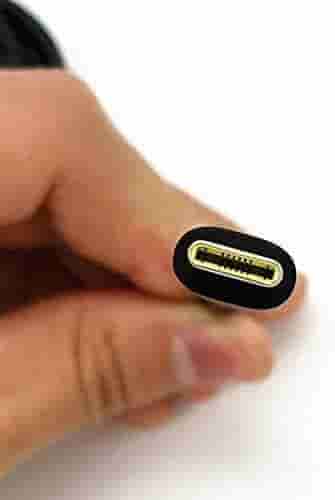
Benefits of Chromebook Charger Type-C:
Convenience:
The reversible connector and universal compatibility of Type-C chargers make them incredibly convenient to use. You no longer have to fumble with multiple cables or worry about carrying the right charger for each device.
Future-Proofing:
Type-C technology is rapidly becoming the standard for charging and connectivity across various devices. Investing in a Type-C charger ensures that your Chromebook remains compatible with future devices and accessories, providing long-term value.
Portability:
Type-C chargers are typically smaller and lighter than traditional chargers, making them ideal for users on the go. Their compact design makes them easy to carry in a laptop bag or backpack, allowing you to stay powered up wherever you are.
Enhanced Performance:
The faster charging speeds and intelligent power delivery of Type-C chargers contribute to improved overall performance and productivity. You can spend less time waiting for your Chromebook to charge and more time getting things done.
Reduced Cable Clutter:
With Type-C chargers, you can consolidate your charging setup and reduce cable clutter. Since Type-C cables can be used interchangeably with multiple devices, you can minimize the number of cables you need to carry or keep track of.
Tips for Chromebook Charger Type-C Usage:

Use Certified Chargers:
To ensure compatibility and safety, always use certified Type-C chargers that meet industry standards. Look for chargers with USB-IF certification or those recommended by the Chromebook manufacturer.
Avoid Cheap Knockoffs:
While inexpensive Type-C chargers may seem tempting, they may not provide the same level of performance or safety as certified chargers. Invest in quality chargers from reputable brands to avoid potential risks.
Keep Connectors Clean:
Periodically inspect the charger’s connector and port for dust, debris, or damage. Clean them gently with a dry cloth or compressed air if necessary to maintain a reliable connection.
Unplug When Not in Use:
To prevent overcharging and prolong the lifespan of your Chromebook’s battery, unplug the charger when the battery is fully charged or when the Chromebook is not in use.
Carry a Spare Charger:
Consider keeping a spare Type-C charger handy, especially when traveling or working in multiple locations. Having a backup charger ensures that you always have access to power when you need it most.
The Chromebook charger Type-C represents a significant advancement in charging technology, offering users greater convenience, versatility, and faster charging speeds. With its reversible connector, intelligent power delivery, and universal compatibility,
Type-C chargers provide a seamless charging experience for Chromebook users. By following the tips outlined in this guide, you can maximize the performance and lifespan of your Chromebook charger Type-C, ensuring reliable power whenever you need it. Whether you’re at home, in the office, or on the go, the Type-C charger is your trusted companion for keeping your Chromebook powered up and ready for action.
You shall also like this article. ” Unveiling Charger Diversity: Exploring Variations Among Laptop Chargers.”
You can Contact Us for any question regarding this article.
FAQs Frequently Asked Questions
What is a Chromebook Charger Type-C?
A Chromebook Charger Type-C is a charging solution equipped with a USB Type-C connector designed specifically for Chromebook devices. It allows users to charge their Chromebooks using the versatile USB Type-C port, offering benefits such as faster charging speeds, universal compatibility, and convenience.
Are Type-C chargers compatible with all Chromebooks?
While many newer Chromebook models come with USB Type-C charging ports, not all Chromebooks support Type-C charging. It’s essential to check the specifications of your Chromebook to confirm compatibility with Type-C chargers before purchasing one.
Can I use a Type-C charger to charge other devices besides my Chromebook?
Yes, one of the advantages of Type-C chargers is their versatility. They can be used to charge a wide range of devices, including smartphones, tablets, laptops, and accessories that support USB Type-C charging.
How do I know if a Type-C charger is compatible with my Chromebook?
To ensure compatibility, look for Type-C chargers that are certified by USB-IF (USB Implementers Forum) or recommended by the Chromebook manufacturer. Additionally, check the voltage and amperage ratings of the charger to ensure they match or are compatible with your Chromebook’s requirements.
Can I use any Type-C cable with my Chromebook charger?
While Type-C cables are generally interchangeable, it’s recommended to use certified cables that meet industry standards to ensure compatibility and safety. Using cheap or uncertified cables may result in subpar performance or potential risks to your device.
Do Type-C chargers support fast charging for Chromebooks?
Yes, many Type-C chargers support fast charging for Chromebooks, thanks to Power Delivery (PD) technology. PD chargers can deliver higher power output, resulting in faster charging speeds compared to traditional chargers. However, it’s essential to check your Chromebook’s specifications to confirm support for fast charging.
Can I charge my Chromebook using a Type-C power bank?
Yes, Type-C power banks are compatible with Chromebooks that support Type-C charging. They provide a portable charging solution, allowing you to recharge your Chromebook when access to a power outlet is limited. Make sure to choose a power bank with sufficient capacity to meet your Chromebook’s power requirements.
Are Type-C chargers more durable than traditional chargers?
Type-C chargers often feature a more robust design compared to traditional chargers, with reinforced connectors and cables. However, durability can vary depending on the quality of the charger and how it’s handled. Proper care and maintenance, such as avoiding bending or twisting the cables excessively, can help prolong the lifespan of your Type-C charger.
Can I use my Chromebook while it’s charging with a Type-C charger?
Yes, you can use your Chromebook while it’s charging with a Type-C charger. However, keep in mind that heavy usage may affect the charging speed, as the power drawn by the Chromebook’s components may offset the charging rate. It’s also essential to ensure that the charger and cable are securely connected to prevent interruptions in charging.
Are Type-C chargers backward compatible with older Chromebook models?
While Type-C chargers are compatible with many newer Chromebook models, they may not be compatible with older models that do not support Type-C charging. It’s crucial to check the specifications of your Chromebook to confirm compatibility before using a Type-C charger with an older model.
What types of Chromebook chargers are available?
There are several types of Chromebook chargers, including standard AC adapters, USB-C chargers, and portable chargers (power banks).
How do I know which type of charger is compatible with my Chromebook?
Check your Chromebook’s specifications or user manual to determine the type of charger it requires. Look for information about the charging port type, voltage, and amperage requirements.
Can I use a charger from a different Chromebook model?
It’s best to use a charger that is specifically designed for your Chromebook model to ensure compatibility and avoid potential damage to the device.
Are portable chargers suitable for Chromebooks?
Yes, portable chargers or power banks can be used to charge Chromebooks, providing a convenient charging solution when access to a power outlet is limited.
What should I do if my Chromebook charger is lost or damaged?
Contact the manufacturer or authorized resellers to purchase a replacement charger compatible with your Chromebook model. Don’t use chargers from third parties that might not adhere to safety regulations.
Are Samsung Chromebook chargers compatible with other Chromebook brands?
Samsung Chromebook chargers are specifically designed for Samsung Chromebook models. While they may physically fit other Chromebooks with similar charging ports, compatibility cannot be guaranteed.
Can I use a third-party charger with my Samsung Chromebook?
Using third-party chargers with Samsung Chromebooks is not recommended, as they may not provide the same level of performance or safety as genuine Samsung chargers.
How can I tell if my Samsung Chromebook charger is genuine?
Purchase chargers directly from Samsung or authorized retailers to ensure authenticity. Genuine Samsung chargers should have the Samsung logo and appropriate certifications.
Can I use a USB-C charger with my Samsung Chromebook?
Many newer Samsung Chromebooks feature USB-C charging ports, allowing for compatibility with USB-C chargers. However, it’s essential to verify compatibility with your specific Chromebook model.
What should I do if my Samsung Chromebook charger stops working?
If your Samsung Chromebook charger malfunctions, contact Samsung support for assistance. Avoid using damaged chargers to prevent potential harm to your Chromebook.
Are Acer Chromebook chargers interchangeable with other Acer devices?
Acer Chromebook chargers are designed specifically for Chromebook models and may not be compatible with other Acer devices, such as laptops or tablets.
Can I use a third-party charger with my Acer Chromebook?
While third-party chargers may physically fit Acer Chromebooks, it’s recommended to use genuine Acer chargers to ensure compatibility and safety.
Do Acer Chromebook chargers come with a warranty?
Acer Chromebook chargers typically come with a limited warranty against defects in materials and workmanship. Check the warranty terms provided by Acer for specific details.
Can I use a USB-C charger with my Acer Chromebook?
Many newer Acer Chromebooks feature USB-C charging ports, allowing for compatibility with USB-C chargers. Verify compatibility with your specific Chromebook model before using a USB-C charger.
How can I troubleshoot charging issues with my Acer Chromebook charger?
If you encounter charging issues with your Acer Chromebook charger, check the power outlet, charger connection, and Chromebook settings. If problems persist, contact Acer support for assistance.
Can I use an HP Chromebook charger with other HP devices?
HP Chromebook chargers are specifically designed for Chromebook models and may not be compatible with other HP devices, such as laptops or tablets.
Are HP Chromebook chargers compatible with third-party USB-C cables?
HP Chromebook chargers typically use USB-C cables that are interchangeable with other USB-C devices. However, it’s recommended to use certified cables for optimal performance and safety.
How can I identify a genuine HP Chromebook charger?
Purchase HP Chromebook chargers from authorized retailers or directly from HP to ensure authenticity. Genuine HP chargers should have the HP logo and appropriate certifications.
Can I use a USB-C charger with my HP Chromebook?
Many newer HP Chromebooks feature USB-C charging ports, allowing for compatibility with USB-C chargers. Verify compatibility with your specific Chromebook model before using a USB-C charger.
What should I do if my HP Chromebook charger is damaged?
If your HP Chromebook charger is damaged, discontinue use immediately and contact HP support for assistance. Avoid using damaged chargers to prevent potential harm to your Chromebook.
Can I use a Dell Chromebook charger with other Dell devices?
Dell Chromebook chargers are designed specifically for Chromebook models and may not be compatible with other Dell devices, such as laptops or tablets.
Are Dell Chromebook chargers compatible with third-party USB-C cables?
Dell Chromebook chargers typically use USB-C cables that are interchangeable with other USB-C devices. However, it’s recommended to use certified cables for optimal performance and safety.
How can I identify a genuine Dell Chromebook charger?
Purchase Dell Chromebook chargers from authorized retailers or directly from Dell to ensure authenticity. Genuine Dell chargers should have the Dell logo and appropriate certifications.
Can I use a USB-C charger with my Dell Chromebook?
Many newer Dell Chromebooks feature USB-C charging ports, allowing for compatibility with USB-C chargers. Verify compatibility with your specific Chromebook model before using a USB-C charger.
What should I do if my Dell Chromebook charger is damaged?
If your Dell Chromebook charger is damaged, discontinue use immediately and contact Dell support for assistance. Avoid using damaged chargers to prevent potential harm to your Chromebook.
Can I use a Lenovo Chromebook charger with other Lenovo devices?
Lenovo Chromebook chargers are designed specifically for Chromebook models and may not be compatible with other Lenovo devices, such as laptops or tablets.
Are Lenovo Chromebook chargers compatible with third-party USB-C cables?
Lenovo Chromebook chargers typically use USB-C cables that are interchangeable with other USB-C devices. However, it’s recommended to use certified cables for optimal performance and safety.
How can I identify a genuine Lenovo Chromebook charger?
Purchase Lenovo Chromebook chargers from authorized retailers or directly from Lenovo to ensure authenticity. Genuine Lenovo chargers should have the Lenovo logo and appropriate certifications.
Can I use a USB-C charger with my Lenovo Chromebook?
Many newer Lenovo Chromebooks feature USB-C charging ports, allowing for compatibility with USB-C chargers. Verify compatibility with your specific Chromebook model before using a USB-C charger.
What should I do if my Lenovo Chromebook charger is damaged?
If your Lenovo Chromebook charger is damaged, discontinue use immediately and contact Lenovo support for assistance. Avoid using damaged chargers to prevent potential harm to your Chromebook.
